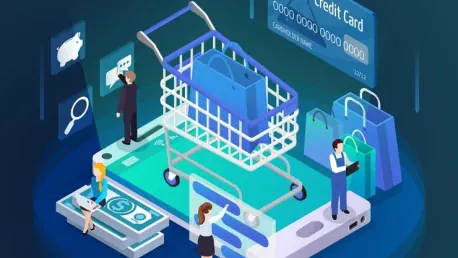Our Retail expert, Zainab Hussain, is an e-commerce strategist with experience in customer engagement and operations management. Today, we’ll discuss the recent developments in the Philippine e-commerce sector and the measures being taken by the Department of Trade and Industry (DTI) to handle the surge in complaints.
What prompted the Department of Trade and Industry (DTI) to consider stricter regulations for the e-commerce sector?
The DTI was prompted to consider stricter regulations due to the significant rise in complaints, which surged by 33% to 36,000 in 2024. This increase highlighted the need for better oversight and enforcement to address various issues within the sector.
You mentioned the number of complaints rose by 33% to 36,000 in 2024. What types of complaints are most common?
The most common complaints involve issues such as refund requests, defective products, and disputes between sellers and platforms. These indicate key areas where customers feel there’s a lack of accountability and responsiveness.
Can you elaborate on the kinds of complaints sellers have against platforms?
Sellers often complain about internal policies of the platforms, particularly regarding return procedures and who bears the cost of returns. These issues can create significant friction between sellers and the platforms they use for transactions.
What steps is the DTI taking to address these complaints?
The DTI is increasing its enforcement capacity by hiring 40 more workers in the E-Commerce Bureau to handle cases and ensure quicker resolution of complaints. This move aims to streamline the process and improve customer satisfaction.
In what ways is the E-Commerce Bureau increasing its enforcement capacity?
The Bureau is expanding manpower by hiring additional staff members specifically to manage and resolve complaints, enabling a more robust and efficient approach to enforcement.
How do you plan to utilize the 40 new workers being hired?
The 40 new workers will be tasked with handling complaints and disputes, thereby accelerating the resolution process and ensuring each case is dealt with thoroughly and promptly.
Tell us more about the proposed online dispute resolution system. How would it work?
The proposed online dispute resolution system will allow consumers and businesses to settle complaints through a centralized platform. This system aims to simplify and expedite the dispute resolution process, providing a more accessible and user-friendly method for resolving issues.
How might you integrate this system with the government’s eGov app?
Integrating the online dispute resolution system with the government’s eGov app would streamline access, making it easier for users to file and track complaints through a familiar and widely used platform.
What initiatives are being undertaken to help micro, small, and medium enterprises (MSME) adopt digital platforms?
The DTI is assisting MSMEs by helping them adopt digital platforms and boost market access through various e-commerce platforms and trade fairs. These initiatives aim to enhance their online presence and competitiveness.
Why do many small businesses outside the capital region lack an e-commerce channel?
Many small businesses outside the capital region lack an e-commerce channel due to limited resources, insufficient knowledge of digital tools, and logistical challenges in implementing e-commerce solutions effectively.
How is the Trade department helping MSMEs boost market access through e-commerce platforms and trade fairs?
The Trade department is organizing trade fairs and providing support to MSMEs in leveraging e-commerce platforms. This support includes training, resources, and strategic partnerships to enhance their market reach and visibility online.
Can you explain the priorities outlined in the agency’s e-commerce roadmap?
The e-commerce roadmap prioritizes public-private partnerships to address logistical and payment issues, particularly outside major urban areas. These priorities aim to create a more inclusive and efficient e-commerce environment across the country.
What are some of the logistics and payment issues being targeted outside major urban areas?
Issues include the lack of reliable delivery services and payment methods that are accessible and trusted by consumers. Addressing these problems is crucial for fostering e-commerce growth in less developed regions.
Despite the rapid growth of e-commerce, why is 78% of activity concentrated in Metro Manila?
Metro Manila acts as the primary economic hub, with better infrastructure, higher internet penetration, and more established e-commerce platforms. These factors contribute to the concentration of e-commerce activity in this region.
What factors contribute to cash on delivery remaining the dominant payment method?
Concerns about digital fraud and limited access to reliable online payment systems lead consumers to prefer cash on delivery. This method is seen as safer and more convenient for a large segment of buyers.
How are concerns about digital fraud impacting consumer behavior?
These concerns make consumers wary of online payment methods, often leading them to avoid transactions that require credit card or bank information, thus impeding the growth of e-commerce.
What measures are being considered to increase consumer trust in online payment systems?
Measures include enhancing security protocols for online transactions, educating consumers on the safety of digital payments, and promoting the use of verified and reputable payment platforms to build trust.
Electronics, food delivery, and beauty products are some of the top-selling categories online. What other categories are performing well?
Besides the top-selling categories, fashion, household essentials, and various personal care products also perform well, reflecting diverse consumer interests and needs.
Shopee leads the domestic e-commerce market with a 54% share. What factors contribute to its dominance?
Shopee’s dominance can be attributed to its user-friendly interface, wide range of products, competitive pricing, and robust marketing strategies that appeal to a broad consumer base.
What future trends do you anticipate for the Philippines’ digital economy and e-commerce sector?
We can anticipate continued growth in mobile commerce, increased adoption of digital payment methods, and further expansion of e-commerce into underserved regions. Additionally, innovations in logistics and delivery solutions are likely to improve efficiency and customer satisfaction.








